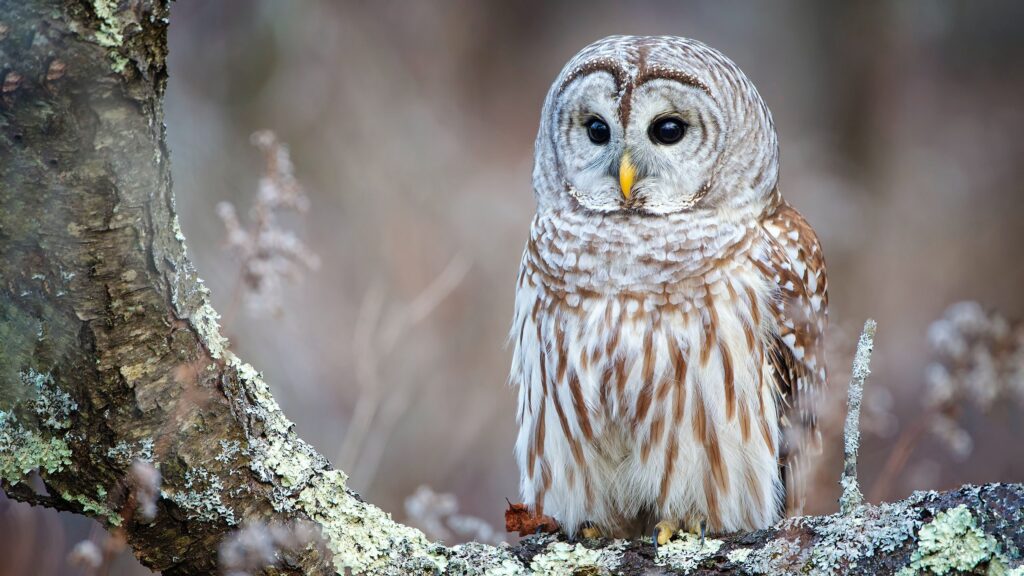Spotting an owl glide through the treetops is a thrilling experience, its silhouette a shadow against the twilight sky.
A hallmark of owls is their completely silent flight. But when they do make noise, their calls are distinctive. Owls start breeding in late January and early February. Because of this, they call more frequently to attract mates or claim territories. That makes late winter the “hooting season.”
Here are four owls commonly found in our regional forests and grasslands (and maybe even your neighborhood).
Great Horned Owl
The Great Horned Owl has the quintessential ear tufts and intimidating yellow-eyed stare that many think of when envisioning an owl. They also have a recognizable call, a deep hoo huhoo, hooo, hoooh. Great Horned Owls are fierce predators. Their prey includes ospreys, falcons, and even other owls. Their deadly grip is strong enough to sever the spine of large prey. These owls are a top predator of American crows. In the evening, you may hear a loud agitated cawing as crows gather en masse to harass a Great Horned Owl caught unawares.
Barred Owl
A soulful gaze and delicately striped brown and white plumage make Barred Owls a beautiful sight, though hard to spot. The coloring is excellent camouflage. If you’ve seen any movie or TV show featuring an owl, you’ve heard the Barred Owl’s song. Their call sounds like the phrase: “Who Cooks for You? Who Cooks for You All?” Young Barred Owls can climb trees. They grasp the bark with their beak and talons, flapping their wings and walking up the trunk. Undignified, but effective.
Eastern Screech Owl
Eastern Screech Owls can be found in every Indiana forest. They even nest in backyard owl boxes. Far from smooth hooting sounds, screech owls make an eerie even-pitched trill, called a tremolo. The tremolo lasts three to five seconds but can contain 35 different notes. Mated pairs use the tremolo in the breeding season to stay in touch. Screech owls are masters of camouflage. They are no bigger than a pint glass and have speckled plumage that blends seamlessly into the nooks of tree trunks.
Barn Owls
The flat pale face and wide black eyes of a Barn Owl give it a haunting look. They are strictly nocturnal and can be seen soaring over fields and grasslands at night looking for small mammals. Barn Owls do not hoot. Instead, they make a harsh scream that lasts about two seconds. Like all owls, they have exceptional vision in low light. But Barn Owls’ ability to find prey by sound alone is the best of any animal tested. It can catch prey in complete darkness even through dense vegetation and snow.
Like many wildlife, owls are losing their habitat. When forests and grasslands are replaced by development, these birds are left to cope with houses instead of trees. There are a few things people can do to help. Installing a chimney cap will keep small owls, like Screech Owls, from nesting in a chimney. Taking down soccer nets keeps owls that soar over fields, like Barn Owls, from getting tangled. Keep cats indoors, always. Cats will kill small owls and eat food that owls need, like small rodents.
As you go on evening hikes this winter, keep your eyes open and your ears perked for the sight and sound of owls. You may just hear a voice asking, “Who cooks for you?”
Kelley V. Phillips is the Communications & Outreach Manager for Red-tail Land Conservancy. She strives to cultivate wonder in nature and action to protect it.




